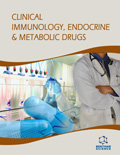Abstract
Nickel is the major cause of allergic contact dermatitis. It is a widely spread metal, being therefore very difficult to avoid. Nickel cutaneous allergy can occur in occupational and non-occupational contexts and can result from direct cutaneous contact, systemic as well as airborne exposure. Such allergy can manifest with typical lesions of allergic contact dermatitis or with peculiar features such as follicular erythemato-micropapularvescicular lesions. Diagnosis of allergic contact dermatitis to nickel is based on patch testing, employing nickel sulfate 5% in petroleum jelly. Reactions to patch test have to be assessed at 48-72 hours, and up to 6 days. Nickel contact dermatitis can be managed with the traditional therapeutic approach used in allergic contact dermatitis. As of today, hyposensitization therapy with oral nickel represents to be the only treatment acting on the pathogenetic mechanisms of nickel allergy.
Keywords: Allergic contact dermatitis, nickel allergy, nickel sulfate, oral hyposensitization.
 20
20

